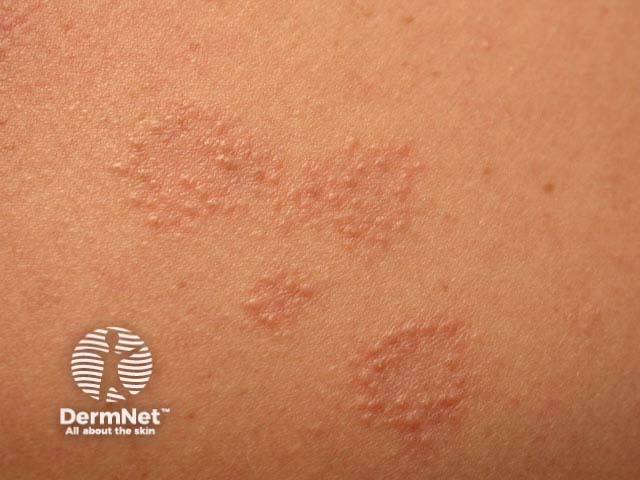Main menu
Common skin conditions

NEWS
Join DermNet PRO
Read more
Quick links
This quiz will test your diagnostic skills with annular plaques.
Most physicians are aware that tinea corporis (dermatophyte fungal infection) often presents with annular or ring-shaped lesions, hence the term ringworm. However, other ring-shaped plaques are frequently mistaken for fungal infection so it is very important to confirm the diagnosis by potassium hydroxide examination and fungal culture prior to the use of topical and/or systemic antifungal agents.
The illustrations show some common and non-so-common acute and chronic conditions that may readily be confused with fungal infections. The lesions appear as circular or ovoid macules or plaques with an erythematous periphery and central clearing.
For each of the twelve cases, study the image(s) and then answer the questions. You can click on the image to view a larger version if required.
Each case should take approximately 2 minutes to complete. There is a list of suggested further reading material at the end of the quiz.
When you finish the quiz, you can download a certificate.

What is the diagnosis?
Lichen planopilaris
What features distinguish this from other annular plaques?
Lichen planopilaris is lichen planus affecting the hair follicles. It results in cicatricial alopecia on the scalp, but when it affects trunk and limbs often presents as annular lesions. There are small shiny skin coloured dry or smooth papules on the periphery of each lesion. Histology reveals lichenoid characteristics.